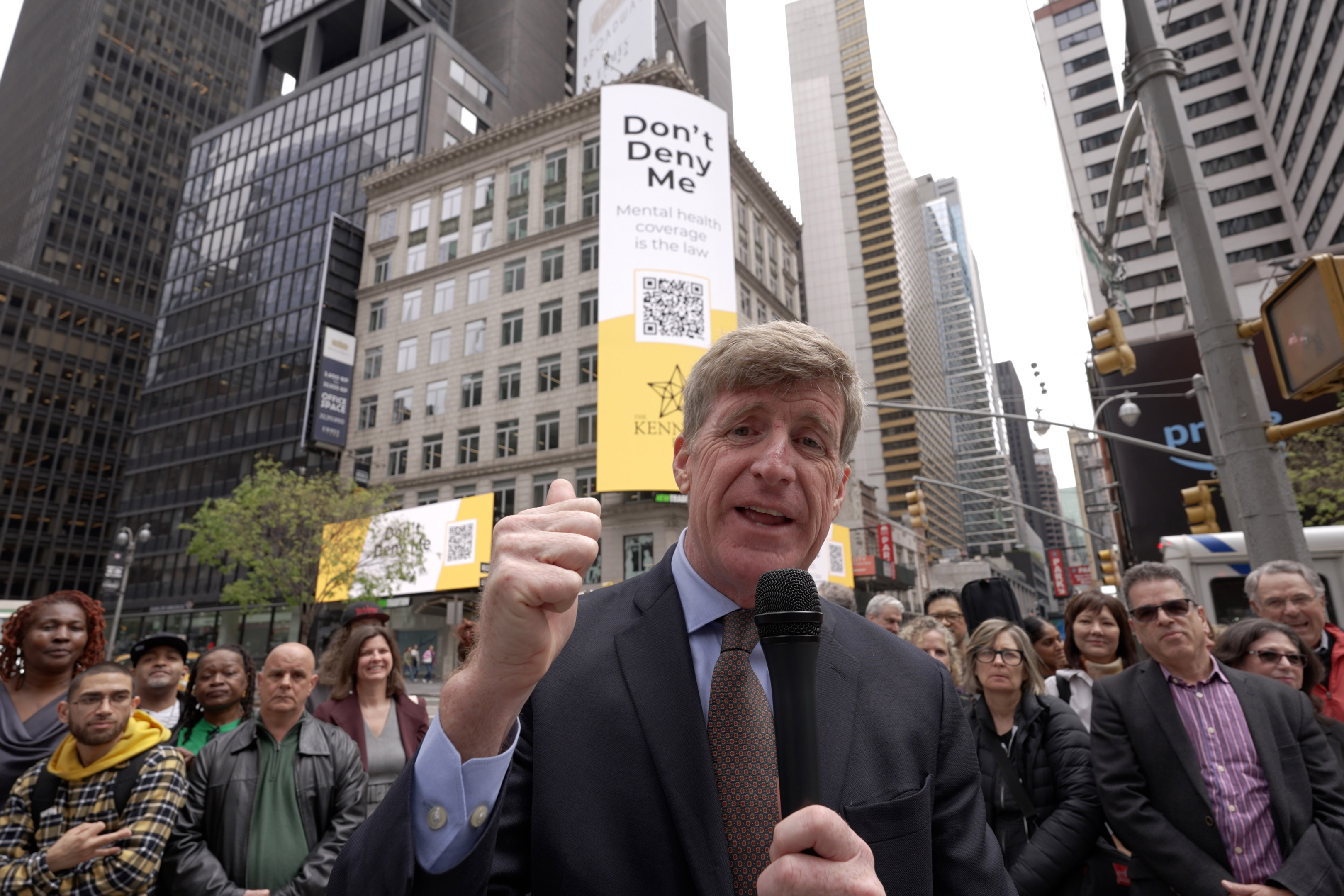KFF Health News – Read More
The Trump administration must soon make a decision that will affect millions of Americans’ ability to access and afford mental health and addiction care.
The administration is facing a May 12 deadline to declare if it will defend Biden-era regulations that aim to enforce mental health parity — the idea that insurers must cover mental illness and addiction treatment comparably to physical treatments for ailments such as cancer or high blood pressure.
Although a federal parity law has been on the books since 2008, the regulations in question were issued last September. They represent the latest development in a nearly two-decade push by advocates, regulators, and lawmakers to ensure insurance plans cover mental health care equitably to physical health care.
Within the dense 166-page final rule, two provisions have garnered particular attention: first, that insurers provide “meaningful benefits” — as defined by independent medical standards — for covered mental health conditions if they do so for physical conditions. For example, if insurers cover screening and insulin treatment for diabetes, then they can’t cover screening alone for opioid addiction; they must also cover medications to treat opioid use disorder.
Second, insurers must go beyond the written words of their policies to measure how they work in practice. For example, are patients having to seek out-of-network care more often for mental than physical care? If so, and it relates to an insurer’s policies, then those policies must be adjusted.
In January, a trade association representing about 100 large employers sued the federal government, claiming the regulations overstepped the administration’s authority, would increase costs, and risked reducing the quality of care. The ERISA Industry Committee represents several Fortune 500 companies, such as PepsiCo and Comcast, which sponsor health insurance plans for their employees and would be directly affected by the new regulations.
ERIC’s lawsuit, filed days before President Donald Trump’s inauguration, puts the onus on the new administration to decide whether to defend the regulations. If it chooses not to, the rules could be scrapped.
Mental health clinicians, patients, and advocates are urging the administration to fight back.
“What we’re trying to do is make the spirit of parity a practical reality,” said Patrick Kennedy, a Democratic former U.S. representative who sponsored the 2008 parity law in the House and co-founded the Kennedy Forum, which advocates on mental health issues. This is “an existential issue for the country, public health, for every aspect of our society.”

A 2023 national survey found that more than 6 million adults with mental illness who wanted treatment in the past year were unable to receive it. Cost was one of the most common barriers.
This lack of treatment harms people’s physical health too, with research suggesting that undertreating depression can complicate chronic conditions, such as diabetes.
Kennedy hopes that connection will prompt support from the Trump administration, which has made chronic disease a central focus of its “Make America Healthy Again” agenda.
“You’re never going to get MAHA if you don’t integrate mental health,” Kennedy said, mentioning the broad health movement embraced by his cousin HHS Secretary Robert F. Kennedy Jr.
But James Gelfand, president and CEO of ERIC, said the regulations are a misguided attempt to solve the nation’s mental health care crisis.
People’s difficulty accessing therapy or medication has less to do with insurance policy and more to do with a severe shortage of mental health care providers, he said, adding, “No amount of penalties on employers” or new parity regulations “is going to change that dynamic until we get more of these providers.”
This point is at the heart of debate about parity issues. Is mental health care difficult to access because there are few providers, or are providers not accepting insurance because of low reimbursement rates? A recent study by the research institute RTI International suggests it has more to do with payment.
The departments of Justice, Labor, and Health and Human Services declined to comment for this article. The Treasury Department, which is also involved in the lawsuit, did not respond to requests for comment.
‘They Bank on You Just Giving Up’
Psychiatric nurse practitioner Gabrielle Abelard employs about 40 clinicians in her therapy practice, which serves about 2,500 clients across Massachusetts each year.
One of the programs she’s most proud to offer is intensive in-home therapy for children with serious behavioral challenges, such as intergenerational trauma, aggressive outbursts, and self-harm. Two clinicians visit the child’s home over months and work with the family, the child’s doctors, and school staff.
“A big part of the work being done is helping to keep children in school, helping to keep them out of the hospital and even out of jail,” Abelard said.
But insurance barriers sometimes hinder the services.
Abelard’s staff has to obtain prior authorization from insurers before they can provide care. Then they have to reapply for authorization every two, three, or six months, depending on the insurer. When that reauthorization is delayed, Abelard faces a dilemma: continue seeing clients knowing insurers may not pay for those services or leave clients without care until the reauthorization comes through.
Continuing services has cost her tens of thousands of dollars, she said, and months of bureaucratic hurdles to obtain back payments from insurers.
“They bank on you just giving up,” she said.
A goal of the landmark 2008 Mental Health Parity and Addiction Equity Act was to decrease dilemmas such as Abelard’s.
But the bipartisan law primarily emphasized easy-to-measure treatment limits, saying insurers could not impose higher deductibles or copays for mental health care than they did for physical health care. What received less attention was how insurers should handle other limitations, such as prior authorization or fail-first requirements for patients to try certain therapies before they would be eligible for others.
As a result, true parity remained elusive, said Deborah Steinberg, a senior health policy attorney at the nonprofit Legal Action Center.
In 2020, Congress tried to address this through a new law, signed by Trump in his first term. The law required insurance plans to systematically analyze differences in certain treatment limitations for mental and physical health care and submit those analyses upon request to states and the federal governments.
As the federal government reviewed some of those analyses, it discovered numerous parity violations. In a 2022 report, it detailed how some insurance plans covered nutritional counseling for diabetes, but not for anorexia or bulimia. Another plan required precertification for all outpatient mental health and addiction services but only for a select few outpatient medical and surgical services.
The regulations issued in September aimed to provide insurers more guidance on the 2020 law and close loopholes that allowed such disparities, Steinberg said.
‘Supply Is the Biggest Problem’
One of the biggest changes in the new regulations was the focus on outcomes, such as how often patients go out of network for mental versus physical care.
Steinberg called the provision “a really important change.” But Gelfand, president of the employer association suing to stop the regulations, said it ignores the complexity of mental health care.
Many factors outside employers’ and insurers’ control affect how often a patient goes out of network, he said, including the availability of providers in the area, regional variations in clinical practices, and the patient’s personal preference.
Mental health clinicians know there’s high demand for their services, so they have a lot of market power. That “is creating the bad behavior from these providers,” Gelfand said, such as refusing to accept insurance and not submitting out-of-network bills on clients’ behalf.
“Supply is the biggest problem,” Gelfand said.
However, the RTI International study challenged that premise, with the authors noting that primary care physicians are in shorter supply than behavioral health providers yet have much lower out-of-network use.
The authors point to insurance reimbursements as the culprit instead. The study found that insurance reimbursements for behavioral health visits are, on average, 22% lower than for medical or surgical office visits. The low pay creates a disincentive for psychologists and psychiatrists to join insurance networks.
But the fix may not be as easy as raising reimbursement rates. Companies are already paying increasingly high premiums for employees’ health insurance and many are concerned about sustaining these benefits.
ERIC has championed other strategies, such as reforming medical education and residency programs to produce more mental health care providers, increasing telehealth services, and training primary care doctors to address basic mental health concerns. The organization often lobbies state and federal lawmakers, writes letters to regulatory agencies, and testifies before Congress on these issues.
Narrowly focusing on insurance regulations could have unintended consequences, Gelfand said. Increased costs for health plans may get passed on to consumers. Or, in an attempt to keep costs down, insurers may narrow the size of their physical health care networks to match the mental health ones. In a worst-case scenario, employers could stop providing mental health benefits altogether.
Advocates say that’s unlikely, since many employees have come to expect this type of coverage, and employers recognize that providing mental health benefits can increase worker productivity and retention.
Patrick Kennedy also pointed to the bigger picture around these issues: If people do not have insurance coverage for mental health care, they’re more likely to end up in crisis at the hospital or in the criminal justice system, he said. Their children may be sent to foster care. Taxpayers finance those systems.
“We all end up picking up the tab for not enforcing parity,” he said.
But what calculation the Trump administration makes — and whether it defends or drops the new regulations — remains to be seen.
KFF Health News is a national newsroom that produces in-depth journalism about health issues and is one of the core operating programs at KFF—an independent source of health policy research, polling, and journalism. Learn more about KFF.
USE OUR CONTENT
This story can be republished for free (details).





